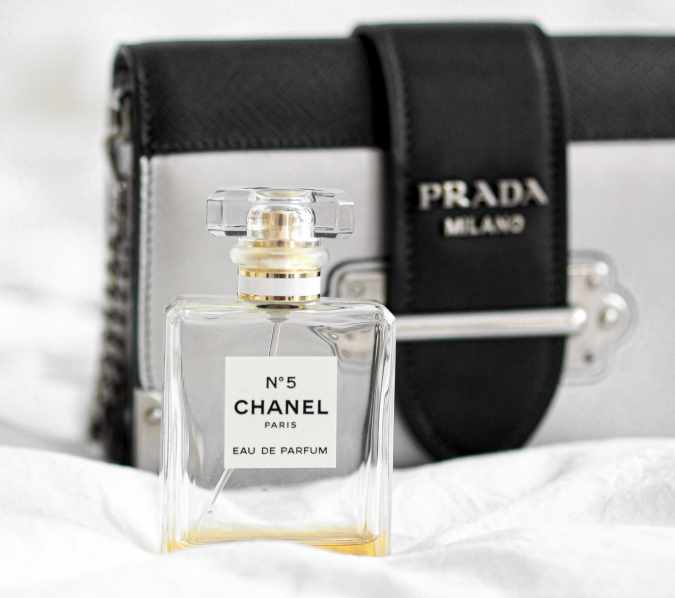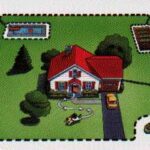In some industries, such as consumer products, trademarks can be an effective way of protecting your intellectual property. For others, it may not be as important. Some trademarks can be hard to secure or to create awareness for, while others if they are really successful, can become part of our lexicon and lose most of their trademark status by becoming a generic term for a category of products. Trademarks such as Band-Aid, Kleenex, and Thermos have become genericized trademarks because we all use them as a generic term to describe a category of products the company pioneered.
But what exactly is a trademark? Trademarks are the face of the company in the marketplace and are used both on products and services. Trademarks most often take the form of words. They can be a company name such as Walmart or Amazon or a slogan such as “Where’s the Beef” or “Don’t leave home without it” or a product name like Galaxy phone or Advil.
Technically, a trademark can also be applied to logos, symbols, sounds, smells, and even colors. However, since most trademark questions I get are related to company names, products, and slogans we will look primarily at word-based trademarks.
Most word-based trademarks are used to convey a brand identity to the marketplace. The more distinctive and unique your trademark is, the more powerful it will become, the more likely it will be remembered and will warrant being registered.
Trademarks live along a continuum called the “hierarchy of marks” and range from fanciful, arbitrary, suggestive, descriptive to generic. As you progress from highly fanciful to purely generic terms, the scope of your protection weakens, as well as your chances of registering the trademark.
Fanciful Trademarks
A purely fanciful trademark term such as Google or Xerox is certainly protectable since they are generally made-up words that have no inherent meaning before their introduction. Often fanciful trademarks represent a company name. Fanciful trademarks are easier to protect since it is easy to prove that no one other than the trademark owner would have a reason to use the fanciful or coined word.
Because a fanciful trademark has no inherent meaning, the owner of the brand has a harder time educating the public about the relationship between the trademark and the company’s products or services. Moreover, since the fanciful trademark term doesn’t mean or suggest anything about the company or product, it’s harder for people to remember it, let alone spell it out. This is the reason that fanciful trademark terms are afforded the highest levels of trademark protection.
Fanciful trademarks can also sometimes suffer from genericide. The term genericide means that a trademarked word is so generic that the company can’t keep others from using it anymore. Genericide can happen to any product that dominates its market. Some fanciful trademarks that suffered from genericide included Aspirin, Cellophane, and Yo-Yo.
Arbitrary Trademarks
Just below fanciful trademarks are what are known as arbitrary trademarks. An arbitrary trademark is a real word or set of words that have a common meaning, however, that meaning is unrelated to the product or services for which the trademark is used. Examples of arbitrary trademarks include SHELL for fuel or SUN for computers. Arbitrary trademarks are considered highly distinctive in identifying products or services once they take hold.
A problem with using arbitrary trademarks, however, is that the word may already exist. Consider the case of Apple computers. Before Apple computers, the Beatles created Apple records. Often, usage was shortened to the single word Apple. In the case of “Apple”, Steve Jobs and the Beatles spent years and millions of dollars arguing over that single word.
As is the case with fanciful or coined trademarks, the general public must be educated as to the association of the arbitrary trademark with the relevant product or service it represents. That said, arbitrary trademarks have a certain advantage over fanciful trademarks when it comes to branding as the term has a secondary meaning. To receive trademark protection for an arbitrary trademark, the owner must prove that the public can connect the arbitrary trademark term to the company and not only to its usual meaning.
Suggestive Trademarks
A suggestive trademark hints to or suggests the nature of a product or service or one of its attributes without actually describing the product or service. Suggestive trademarks require the consumer to use their imagination or perception to understand what the product is.
Suggestive trademarks often represent a combination of incongruous terms where at least one term doesn’t quite fit with the other. To qualify for protection, the owner has to argue that no one would combine these two or three words together. Also, to qualify as a suggestive trademark, a consumer would have to apply a multi-stage reasoning process to determine which product characteristics are indicated by the term.
Some examples of suggestive trademarks include Microsoft for software and KitchenAid for appliances. Many taglines such as Nike’s “Just do it” or Coca-Cola’s “The real thing” are frequently considered suggestive trademarks.
Suggestive trademarks have an inherent element of sales appeal and therefore require less education of the public than a fanciful or arbitrary trademark. For this reason, suggestive trademarks are entitled to less-extensive protection.
Suggestive trademarks are the most commonly used trademarks. The reason for this is pretty obvious since there is a clear differentiating advantage in branding and the term can be “sticky”. Moreover, since suggestive trademarks encourage a degree of imagination and perception, it can be a very strong marketing tool.
Descriptive Trademarks
Whereas a suggestive trademark leads the consumer by the mind, a descriptive trademark leads the consumer by the hand.
Descriptive trademarks are used for products and often get right to the point by describing a company’s product. As such, descriptive trademarks don’t get as much if any protection from trademark laws. This is because someone else can use the trademarked term to describe a totally different product. For example, some product reviewers may use the term “best buy” to describe good products, however, you don’t have to visit a Best Buy store to buy them.
Companies named after their founders, like Ford Motor or Walt Disney Company, are often considered descriptive trademarks. This is because a man named George Ford could own a motor and call it Ford’s Motor or someone else could be named Walt Disney and have a company.
Some examples of descriptive trademarks that do not include a founder’s name are International Business Machines (IBM) or American Airlines.
Descriptive trademarks are hard for most businesses to pull off unless you can show acquired distinctiveness, but it is possible as you can see by the list above. However, getting a descriptive trademark approved takes dedication in the form of marketing your brand, and often takes more than five years of continued and exclusive use to establish secondary meaning. An example of a descriptive word that acquired a secondary meaning and became protectable as a trademark is SHARP for televisions. As a small business, unless you feel that your brand has already succeeded in this endeavor, it is generally not advisable to apply for trademark protection for a descriptive trademark.
Generic Trademarks
Generic trademarks aren’t protected by trademark law. This means that everyone can use the word or image without any problems. A generic word can be thought of as the common name of the product. For example, “clock” is a generic word for timepieces. Such words can never be appropriated by a single party as trademarks for products since the public perceives and uses them solely as common nouns or terms.
Taglines like “Think Green” or “Proudly Made in the USA” are considered information and are denied trademark protection.
Other Considerations
You should use the Trademark Electronic Search System (TESS) provided by the United States Patent and Trademark Office to do a search for any Word Mark that you are considering trademarking to see if it is not already registered.
Keep records of trademark developments. Also, keep records of your sales, from prototype to full commercial production and sale. You should also keep the documents that establish the accuracy of the dates that you will indicate if you decide to file for trademark registration. The trademark office requires a record of when you first started using it in commerce. Guessing on the dates or not having any backup documentation will result in the rejection of your application by the trademark office.
If you choose a trademark that your competitor thinks is likely to confuse the marketplace, they are going to challenge you. You need to choose a trademark that is sufficiently distant from those already out there in the marketplace, so they don’t accuse you of infringement.
The ™ symbol can generally be used by any person or business to indicate that a particular word, phrase, or logo is intended to serve as an identifier for a product or service. You do not have to register a trademark to use it, and many companies will opt to use the ™ symbol for new products before and during the application process for the registration of the trademark.
The ® symbol indicates that a word, phrase, or logo is a registered trademark. It must only be used in cases of registered trademarks and by the owner or licensee, and in regions where you have a valid trademark registration.
If you are ready to register a trademark in the U.S., you can go to the Trademark Office to begin the process.
Should you register a trademark and if so, which one?












